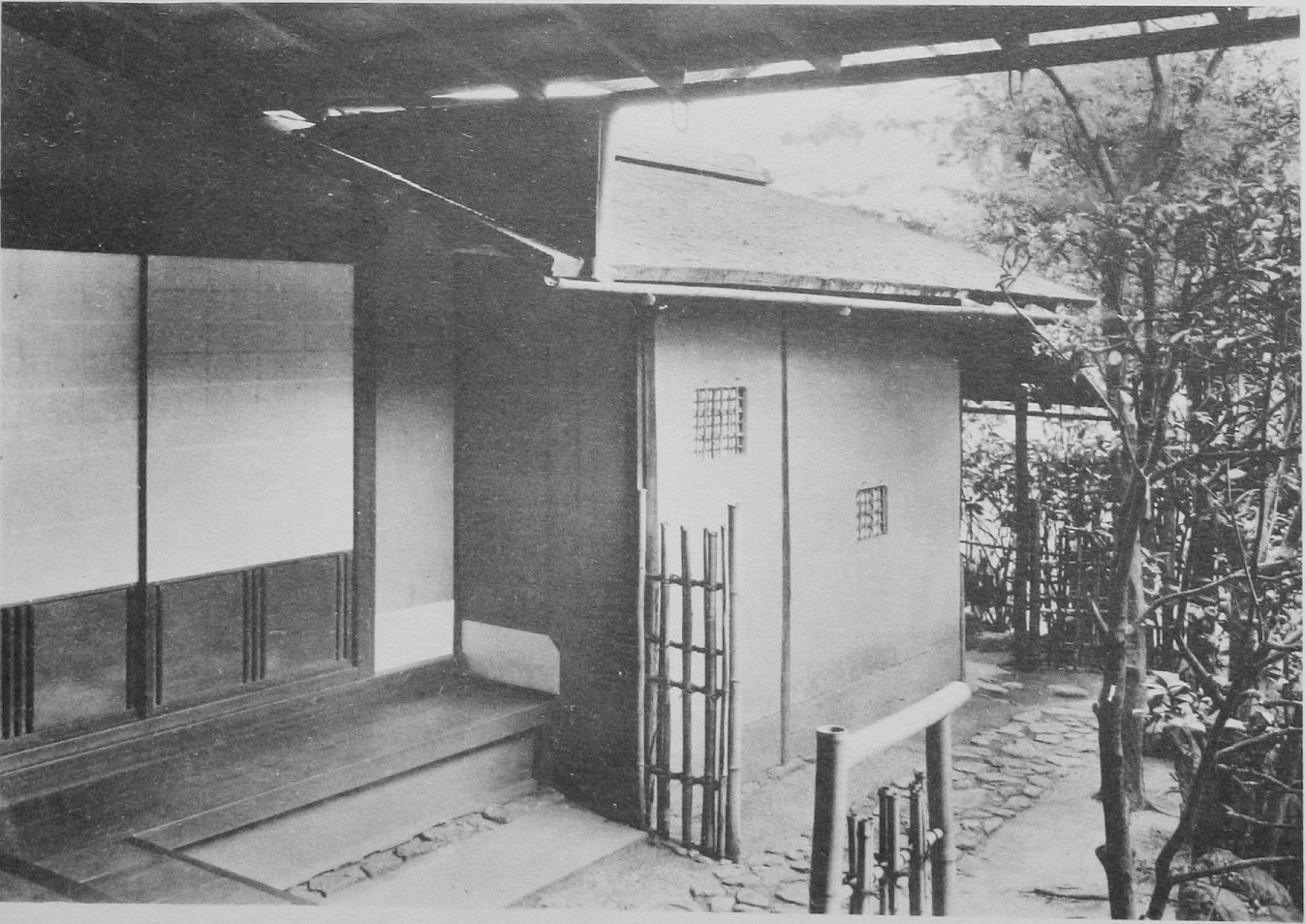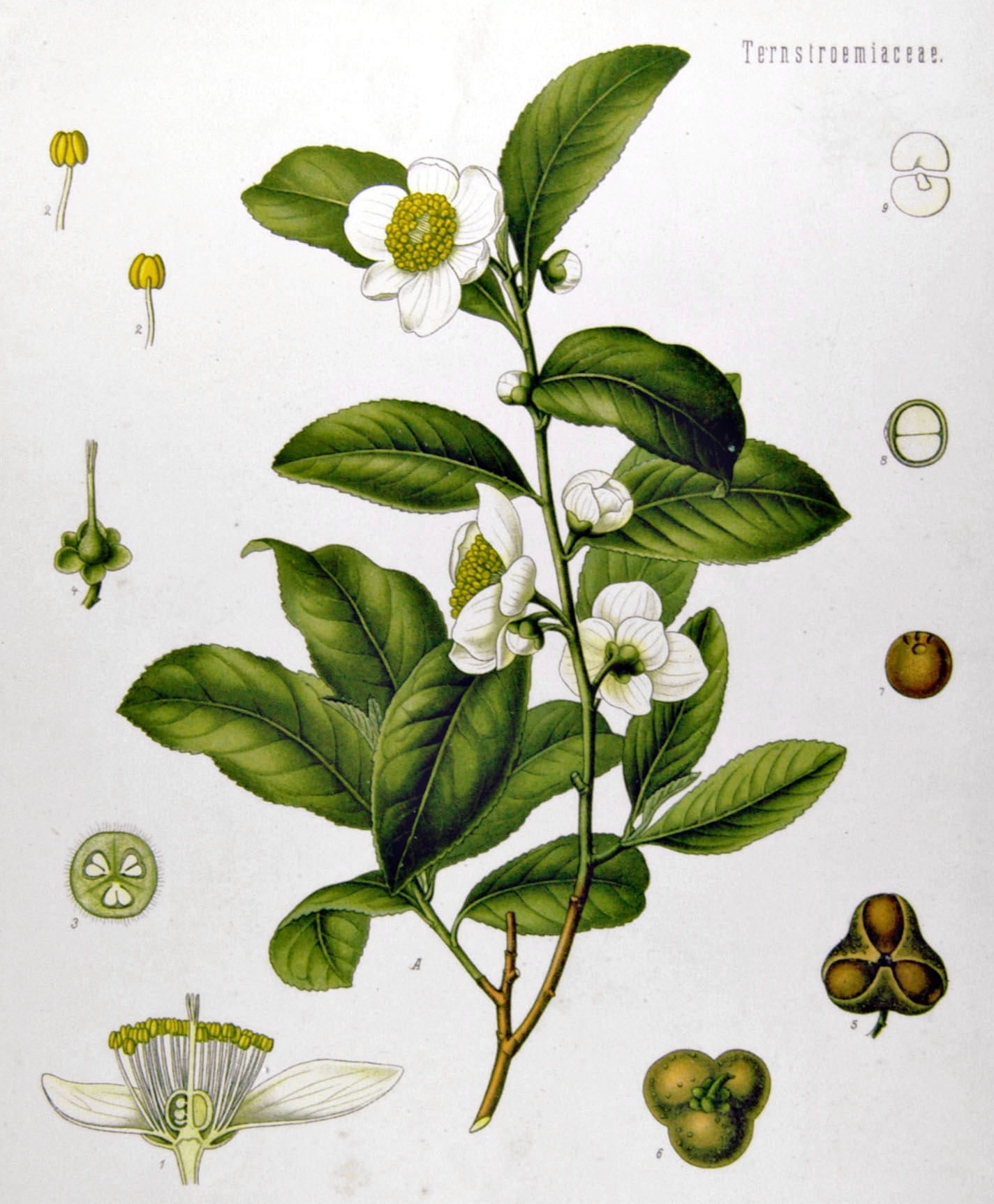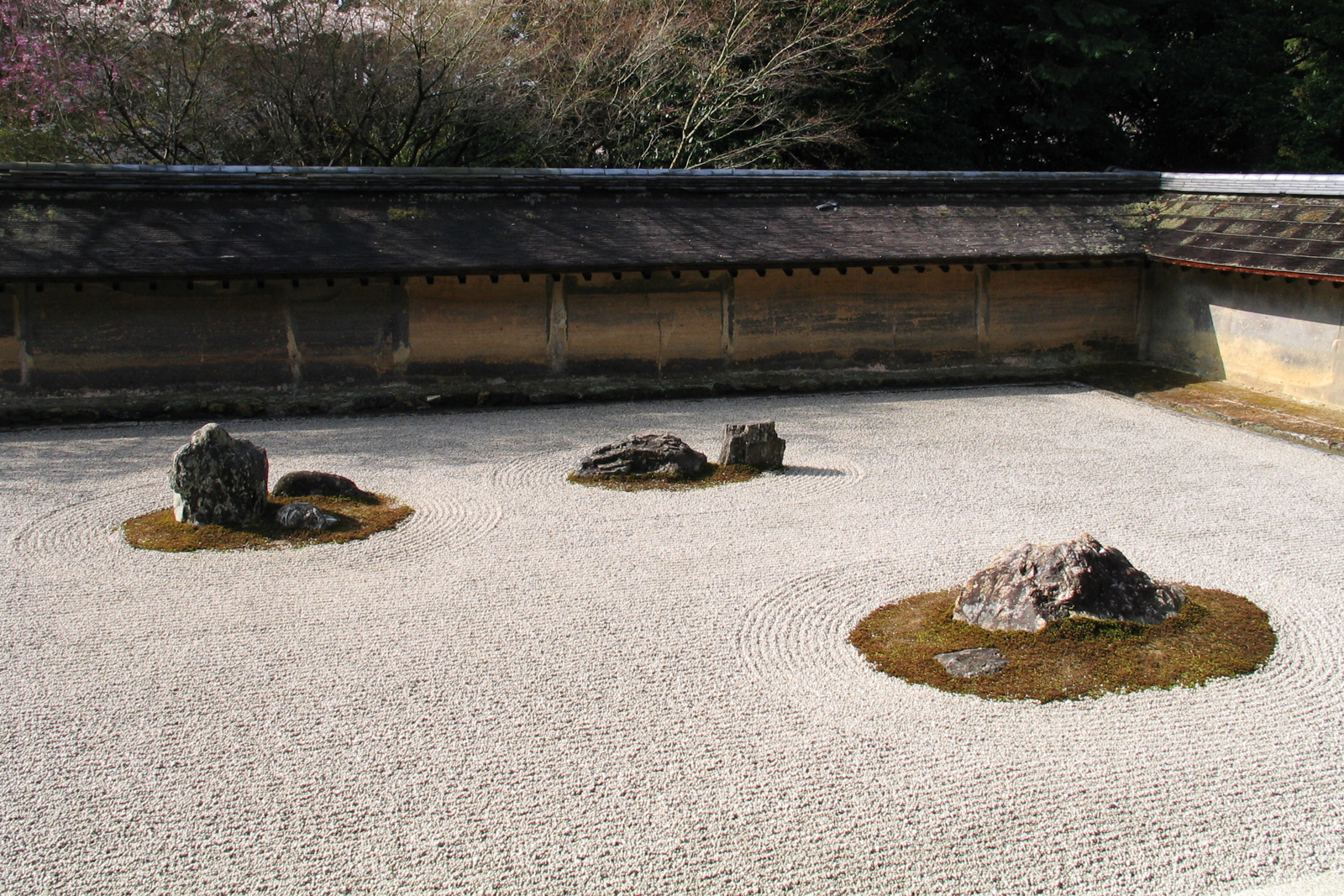|
Chōjirō
(1516-?1592) is distinguished as the first generation in the Raku family line of potters. According to historical documents he was the son of one Ameya, who is said to have emigrated to Japan from Korea (or possibly Ming China, as asserted on the RAKU WARE website (link below) of the still active line of potters founded by Chojiro). Historical evidence shows that he produced ridge tiles for Toyotomi Hideyoshi's Jurakudai palace in 1574. There is a historical document reporting that in 1584, Toyotomi Hideyoshi presented him with a seal inscribed with the character 楽, ''raku'', and with this "Raku" was adopted as the family name. He worked at one time for Sen no Rikyū, the master of tea, at whose request he created teabowls to be used in chanoyu, the Japanese tea ceremony. Extant records of the use, at the time, of the tea bowls that he produced for Rikyū describe them as "tea bowls of the Sōeki form", Sōeki being the name that Rikyū was then generally known by.''Rikyū ... [...More Info...] [...Related Items...] OR: [Wikipedia] [Google] [Baidu] |
Raku Ware
is a type of Japanese pottery traditionally used in Japanese tea ceremonies, most often in the form of ''chawan'' tea bowls. It is traditionally characterised by being hand-shaped rather than thrown, fairly porous vessels, which result from low firing temperatures, lead glazes and the removal of pieces from the kiln while still glowing hot. In the traditional Japanese process, the fired raku piece is removed from the hot kiln and is allowed to cool in the open air. The Western version of raku was developed in the 20th century by studio potters. Typically wares are fired at a high temperature, and after removing pieces from the kiln, the wares are placed in an open-air container filled with combustible material, which is not a traditional Raku practice in Japan. The Western process can give a great variety of colors and surface effects, making it very popular with studio and amateur potters. History In the 16th century, Sen no Rikyū, the Japanese tea master, was involved wit ... [...More Info...] [...Related Items...] OR: [Wikipedia] [Google] [Baidu] |
Sen No Rikyū
, also known simply as Rikyū, is considered the historical figure with the most profound influence on ''chanoyu,'' the Japanese "Way of Tea", particularly the tradition of '' wabi-cha''. He was also the first to emphasize several key aspects of the ceremony, including rustic simplicity, directness of approach and honesty of self. Originating from the Sengoku period and the Azuchi–Momoyama period, these aspects of the tea ceremony persist. Rikyū is known by many names; for consistency, he will be referred to as Rikyū in this article. There are three ''iemoto'' (''sōke''), or 'head houses' of the Japanese Way of Tea, that are directly descended from Rikyū: the Omotesenke, Urasenke, and Mushakōjisenke, all three of which are dedicated to passing forward the teachings of their mutual family founder, Rikyū. Early life Rikyū was born in Sakai in present-day Osaka Prefecture. His father was a warehouse owner named , who later in life also used the family name Sen, and his ... [...More Info...] [...Related Items...] OR: [Wikipedia] [Google] [Baidu] |
Tea Bowl, Known As Suchiro, Studio Of Chojiro, Raku Ware, Kuroraku Type, Azuchi-Momoyama To Edo Period, 1500s-1600s AD, Ceramic - Tokyo National Museum - Ueno Park, Tokyo, Japan - DSC08889
Tea is an aromatic beverage prepared by pouring hot or boiling water over cured or fresh leaves of ''Camellia sinensis'', an evergreen shrub native to East Asia which probably originated in the borderlands of southwestern China and northern Myanmar. Tea is also rarely made from the leaves of '' Camellia taliensis''. After plain water, tea is the most widely consumed drink in the world. There are many different types of tea; some have a cooling, slightly bitter, and astringent flavour, while others have vastly different profiles that include sweet, nutty, floral, or grassy notes. Tea has a stimulating effect in humans primarily due to its caffeine content. An early credible record of tea drinking dates to the third century AD, in a medical text written by Chinese physician Hua Tuo. It was popularised as a recreational drink during the Chinese Tang dynasty, and tea drinking subsequently spread to other East Asian countries. Portuguese priests and merchants introduced ... [...More Info...] [...Related Items...] OR: [Wikipedia] [Google] [Baidu] |
Toyotomi Hideyoshi
, otherwise known as and , was a Japanese samurai and ''daimyō'' (feudal lord) of the late Sengoku period regarded as the second "Great Unifier" of Japan.Richard Holmes, The World Atlas of Warfare: Military Innovations that Changed the Course of History, Viking Press 1988. p. 68. Hideyoshi rose from a peasant background as a Affinity (medieval), retainer of the prominent lord Oda Nobunaga to become one of the most powerful men in Japan. Hideyoshi succeeded Nobunaga after the Honnō-ji Incident in 1582 and continued Nobunaga's campaign to unite Japan that led to the closing of the Sengoku period. Hideyoshi became the ''de facto'' leader of Japan and acquired the prestigious positions of Daijō-daijin, Chancellor of the Realm and Sesshō and Kampaku, Imperial Regent by the mid-1580s. Hideyoshi launched the Japanese invasions of Korea (1592–1598), Japanese invasions of Korea in 1592 to initial success, but eventual military stalemate damaged his prestige before his death in 1 ... [...More Info...] [...Related Items...] OR: [Wikipedia] [Google] [Baidu] |
Chanoyu
The Japanese tea ceremony (known as or ) is a Japanese cultural activity involving the ceremonial preparation and presentation of , powdered green tea, the procedure of which is called . While in the West it is known as "tea ceremony", it is seldom ceremonial in practice. Most often tea is served to family, friends, and associates; religious and ceremonial connotations are overstated in western spaces. While in the West it is known as a form of tea ceremony, in Japan the art and philosophy of tea can be more accurately described as "Teaism" as opposed to focusing on the ceremonial aspect. Zen Buddhism was a primary influence in the development of the culture of Japanese tea. Much less commonly, Japanese tea practice uses leaf tea, primarily , a practice known as . Tea gatherings are classified as either an informal tea gathering () or a formal tea gathering (). A is a relatively simple course of hospitality that includes confections, thin tea, and perhaps a light meal. A is a ... [...More Info...] [...Related Items...] OR: [Wikipedia] [Google] [Baidu] |
Wabi-sabi
In traditional Japanese aesthetics, is a world view centered on the acceptance of transience and imperfection. The aesthetic is sometimes described as one of appreciating beauty that is "imperfect, impermanent, and incomplete" in nature. It is prevalent throughout all forms of Japanese art. is a composite of two interrelated aesthetic concepts, and . According to the Stanford Encyclopedia of Philosophy, may be translated as "subdued, austere beauty," while means "rustic patina." is derived from the Buddhist teaching of the , specifically , and , however, originally the concepts were seen as two distinct concepts. Characteristics of aesthetics and principles include asymmetry, roughness, simplicity Simplicity is the state or quality of being simple. Something easy to understand or explain seems simple, in contrast to something complicated. Alternatively, as Herbert A. Simon suggests, something is simple or complex depending on the way we ..., economy, austerity ... [...More Info...] [...Related Items...] OR: [Wikipedia] [Google] [Baidu] |
Pottery
Pottery is the process and the products of forming vessels and other objects with clay and other ceramic materials, which are fired at high temperatures to give them a hard and durable form. Major types include earthenware, stoneware and porcelain. The place where such wares are made by a ''potter'' is also called a ''pottery'' (plural "potteries"). The definition of ''pottery'', used by the ASTM International, is "all fired ceramic wares that contain clay when formed, except technical, structural, and refractory products". In art history and archaeology, especially of ancient and prehistoric periods, "pottery" often means vessels only, and sculpted figurines of the same material are called "terracottas". Pottery is one of the oldest human inventions, originating before the Neolithic period, with ceramic objects like the Gravettian culture Venus of Dolní Věstonice figurine discovered in the Czech Republic dating back to 29,000–25,000 BC, and pottery vessels that were ... [...More Info...] [...Related Items...] OR: [Wikipedia] [Google] [Baidu] |
Japanese Potters
Japanese may refer to: * Something from or related to Japan, an island country in East Asia * Japanese language, spoken mainly in Japan * Japanese people, the ethnic group that identifies with Japan through ancestry or culture ** Japanese diaspora, Japanese emigrants and their descendants around the world * Japanese citizens, nationals of Japan under Japanese nationality law ** Foreign-born Japanese, naturalized citizens of Japan * Japanese writing system, consisting of kanji and kana * Japanese cuisine, the food and food culture of Japan See also * List of Japanese people * * Japonica (other) * Japonicum * Japonicus * Japanese studies Japanese studies (Japanese: ) or Japan studies (sometimes Japanology in Europe), is a sub-field of area studies or East Asian studies involved in social sciences and humanities research on Japan. It incorporates fields such as the study of Japanese ... {{disambiguation Language and nationality disambiguation pages ... [...More Info...] [...Related Items...] OR: [Wikipedia] [Google] [Baidu] |
1592 Deaths
Year 159 (CLIX) was a common year starting on Sunday (link will display the full calendar) of the Julian calendar. At the time in Roman territories, it was known as the Year of the Consulship of Quintillus and Priscus (or, less frequently, year 912 ''Ab urbe condita''). The denomination 159 for this year has been used since the early medieval period, when the Anno Domini calendar era became the prevalent method in Europe for naming years. Events By place India * In India, the reign of Shivashri Satakarni, as King Satavahana of Andhra, begins. Births * December 30 – Lady Bian, wife of Cao Cao (d. 230) * Annia Aurelia Fadilla, daughter of Marcus Aurelius * Gordian I, Roman emperor (d. 238) * Lu Zhi, Chinese general (d. 192) Deaths * Liang Ji, Chinese general and regent A regent (from Latin : ruling, governing) is a person appointed to govern a state '' pro tempore'' (Latin: 'for the time being') because the monarch is a minor, absent, incapacitated or u ... [...More Info...] [...Related Items...] OR: [Wikipedia] [Google] [Baidu] |




